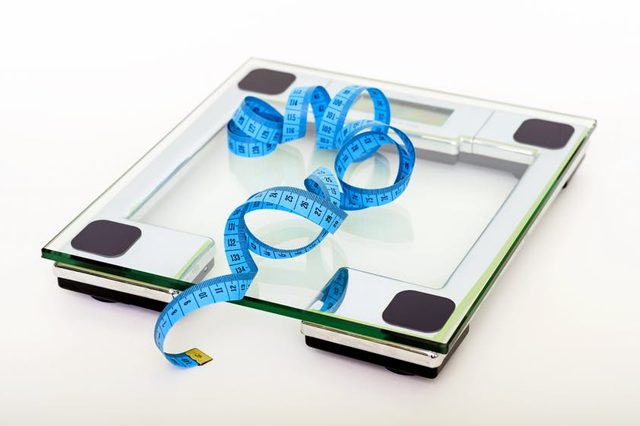If you are thinking about losing weight, it is very likely that you have started looking for information on how to follow some type of diet. Currently there are a large number of options to choose from, such as the low carb diet, a vegan diet or a definition diet, among others. Each of them has its characteristics and peculiarities, and in this case we are going to refer to the ketogenic diet, which has become very popular in recent years.

The ketogenic diet, also called the keno diet, is an eating plan that is characterized by being low in carbohydrates and rich in fat, offering many health benefits. In fact, different studies have been able to confirm that this diet helps to lose weight and improve health; and they also have benefits against diabetes, epilepsy, cancer or Alzheimer’s, among others.
What is a ketogenic diet
The ketogenic diet is a low-carbohydrate, high-fat eating plan that seeks to drastically reduce carbohydrates; and these are replaced by fats. This puts the body into a metabolic state called ketosis.
The moment this happens, the body becomes more efficient, converting all fat into energy. Similarly, it converts fat into ketones in the liver, which generates more energy for the brain.
These types of diets can cause reductions in blood sugar and insulin levels. Along with increasing ketones, it offers numerous health benefits.
Types of ketogenic diets
There are different versions of ketogenic diets, among which we must include:
- Standard Ketogenic Diet (SCD). It is a very low-carbohydrate eating plan, with a moderate intake of protein and high in fat. It generally contains 75% fat, 20% protein and 5% carbohydrates.
- Cyclic ketogenic diet (CDD). This plan supposes to make higher recharges of carbohydrates.
- The adapted ketogenic diet (ACD). In this case it is possible to add carbohydrates on training days.
- High protein ketogenic diet. It is similar to the standard, but in this case it is committed to including a greater amount of protein. It usually consists of 60% fat, 35% protein and 5% carbohydrates.
Foods to Avoid on a Ketogenic Diet
Any food high in carbohydrates should be avoided. Among the list of foods that should be eliminated or reduced in a ketogenic diet, we have to mention the following:
- Sugary foods such as soft drinks, fruit juices, cakes, ice cream, sweets…
- Cereals or starches: products derived from wheat, rice, pasta, cereals….
- Fruits accept the small portions of forest fruits.
- Beans or legumes, such as peas, kidney beans, chickpeas, lentils…
- Root vegetables and tubers such as potatoes, carrots, parsnips…
- Low-fat or diet products
- Condiments and sauces, especially if they have saturated fat and sugar
- Saturated fats, limiting the intake of refined oils, mayonnaise…
- Alcohol, which should be eliminated from a ketogenic diet.
- Sugar-free diet foods
Foods to Eat on the Ketogenic Diet
Most meals on a ketogenic diet should be created around these foods:
- Meat: red meat, ham, sausages, rib eye, chicken, turkey and bacon.
- Fatty fish such as trout, salmon, tuna, and mackerel.
- Eggs that is pasteurized and rich in omega 3.
- butter and cream
- Unprocessed cheese, such as cheddar, goat, blue, cream, or mozzarella.
- Nuts and seeds, such as almonds, walnuts, pumpkin seeds, chia seeds, flax seeds…
- Healthy oils, especially coconut oil, extra virgin olive oil, and avocado oil.
- Whole avocados or guacamole made naturally.
- Low carb vegetables like most green vegetables, onions, bell peppers, tomatoes….
- Seasonings like salt, pepper, and some healthy herbs and spices.
The diet is preferably based on whole foods with a single ingredient.
Ketogenic snacks that are healthy
In the event that you feel hungry between meals, you should keep in mind that you can resort to a series of ketogenic and healthy snacks, among which are the following:
- Fatty meat or fish
- handful of nuts or seeds
- Cheese
- dark chocolate 90%
- One or two hard-boiled eggs
- cheese with olives
- Strawberries and cream
- Celery with sauce and guacamole
- Low-Carb Milkshake with Almond Milks, Cocoa Powder, and Nut Butter
- Whole milk yogurt with nut butter and cocoa powder
- Smaller portions with leftover meals
Ketogenic Diet Side Effects
The ketogenic diet is safe for healthy people, but some side effects may occur as your body adjusts.
This can cause a decrease in energy and mental capacity; an increased feeling of hunger; sleeping problems; nausea; digestive upset and decreased exercise performance.

